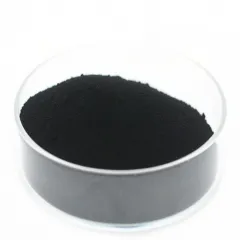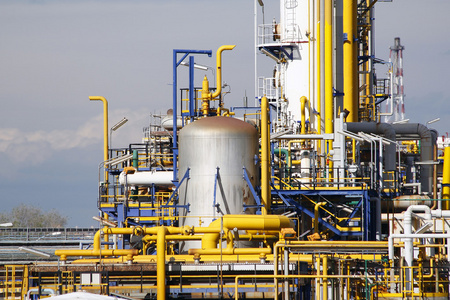- Home
- Products
- Elementary
- Boride Powder
- 3D Printing Powder
- Sulfide Powder
- Oxide Powder
- Carbide powder
- Nitride Powder
- Silicide Powder
- Hydride Powder
- Telluride Powder
- Selenide Powder
- Stearic Acid Series
- Phosphide Powder
- Nanoparticles
- Metal Alloy
- MAX Phase
- Lithium Battery Anode
- Surfactant
- Molecular sieves
- Concrete Admixtures
- Cladding of metals
- News
- Blog
- Contact
- About
Study and Analysis of Synthesis Method of Aluminum Carbide Powder
Synthesis method of aluminum carbide:
Traditional synthesis method
The traditional methods for synthesizing aluminum carbide mainly include carbothermal reduction and arc method.
Carbothermal reduction method
Carbothermic reduction is the preparation of aluminum carbide by using carbon to reduce alumina at high temperatures. The method must be carried out at high temperatures above 1600 ° C and requires high-purity raw materials such as high-purity alumina and high-purity carbon. The advantages of this method are that it can prepare high-purity aluminum carbide. Still, it isn't easy to achieve large-scale production because of high energy consumption, equipment requirements, and strict requirements for raw materials.
Arc method
The arc method heats alumina and carbon in an arc to high temperatures so that they react to form aluminum carbide. The advantage of this method is that it can achieve large-scale production, and the requirement for raw materials is relatively low. However, the energy consumption of this method is also high, and the product quality is not stable enough.
Modern synthesis methods
With the development of science and technology, researchers continue exploring new synthetic methods to prepare aluminum carbide, including microwave synthesis, chemical vapor deposition, sol-gel method, etc.
Microwave synthesis
Microwave synthesis is a method of using microwave energy to accelerate chemical reactions. Under the action of microwave, the reaction rate of alumina and carbon is accelerated, and aluminum carbide can be synthesized at a lower temperature. The advantages of this method are fast reaction speed, low energy consumption and high product quality. However, the equipment cost of this method is high, and the technical requirements for operation are high.
Chemical vapor deposition
The Chemical vapor deposition method transports the reaction gas to the reactor at a certain temperature and pressure so that the gas can chemically react on the substrate and generate the required aluminum carbide film. The advantage of this method is that high-purity and high-quality aluminum carbide films can be prepared at a lower temperature. However, the equipment cost of this method is high, and the operation technology is strict.
Sol-gel method
The sol-gel method is a preparation method to obtain the desired material by heat treatment of the gel in the sol. In the aluminum carbide preparation, the alumina and carbon sol mixture is dried and heat treated to obtain aluminum carbide powder. The advantage of this method is that high-purity aluminum carbide powder can be prepared at a lower temperature. However, the raw material cost of this method is high, and the production cycle is long.

Advantages and Disadvantages of aluminum carbide:
Traditional synthesis method of aluminum carbide
Carbothermal reduction method
Advantages:
High-purity aluminum carbide can be prepared, suitable for large-scale production;
The high reaction temperature can promote the reaction.
The source of raw materials is abundant, and the cost is relatively low.
Cons:
High energy consumption and high production cost;
High equipment requirements, high maintenance costs;
The purity of raw materials requires the use of high-purity alumina and high-purity carbon.
Arc method
Advantages:
Can achieve large-scale production;
Rich source of raw materials, relatively low cost;
The reaction speed is fast, and the product purity is high.
Cons:
High energy consumption and high production cost;
Product quality is not stable enough;
High requirements for equipment and high maintenance costs.
The modern synthesis method of aluminum carbide
Microwave synthesis
Advantages:
The reaction speed is fast, and the synthesis time can be greatly shortened.
Low energy consumption, low production cost;
The product has high purity and high crystallinity;
Selective synthesis of aluminum carbide with a specific structure can be achieved.
Cons:
High equipment cost, high maintenance cost;
High technical requirements for operation;
High raw material requirements require the use of specific properties of alumina and carbon.
Chemical vapor deposition
Advantages:
High-purity and high-quality aluminum carbide film can be prepared.
The structure and properties of the products can be regulated by controlling the reaction conditions.
Can achieve continuous production, suitable for large-scale preparation.
Cons:
High equipment cost, high maintenance cost;
Strict technical requirements for operation;
The harsh reaction conditions require a high vacuum or high-purity gas environment.

Prospect Market of of aluminum carbide:
Refractories market demand
With the rapid development of steel, non-ferrous metals, glass and other industries, the demand for high-performance refractory materials continues to increase. Aluminum carbide has excellent high-temperature resistance and stability and is the ideal choice for preparing high strength, high wear resistance, and high heat resistance refractory. In the future, with the continuous improvement of refractory performance requirements in various industries, the application of aluminum carbide in the field of refractory will be further expanded, and the market demand will continue to grow.
The market demand for ceramic materials
Aluminum carbide ceramics have the characteristics of high hardness, high strength, high wear resistance, high heat resistance, etc., and are widely used in ceramic tools, abrasives, seals, and other fields. With the rapid development of the manufacturing industry, the demand for high-performance ceramic materials is increasing. In the future, with the technological progress and product upgrading of the manufacturing industry, the application field of aluminum carbide ceramics will be further expanded, and the market demand will continue to expand.
Market demand in the field of catalyst support
Aluminum carbide is an ideal catalyst carrier because of its large specific surface area and good electrical conductivity. In fuel cells, biosensors, electrochemical reactors, etc., aluminum carbide can be used as a catalyst carrier to improve reaction efficiency. The demand for efficient catalyst carriers is increasing with the continuous development of new energy technology and biotechnology. In the future, the application of aluminum carbide in the field of catalyst support will be further expanded, and the market demand will also grow accordingly.
Supplier of aluminum carbide:
Synthetic Chemical Nano Technology Co. Ltd. , is a trusted supplier and manufacturer of chemicals and Nanomaterials. With over 12 year experience, Seguesec has been providing high-quality chemical products.
High-quality products are what you want Aluminium carbide powder Please feel free and contact us to make an enquiry. ( sales5@nanotrun.com )
Inquiry us